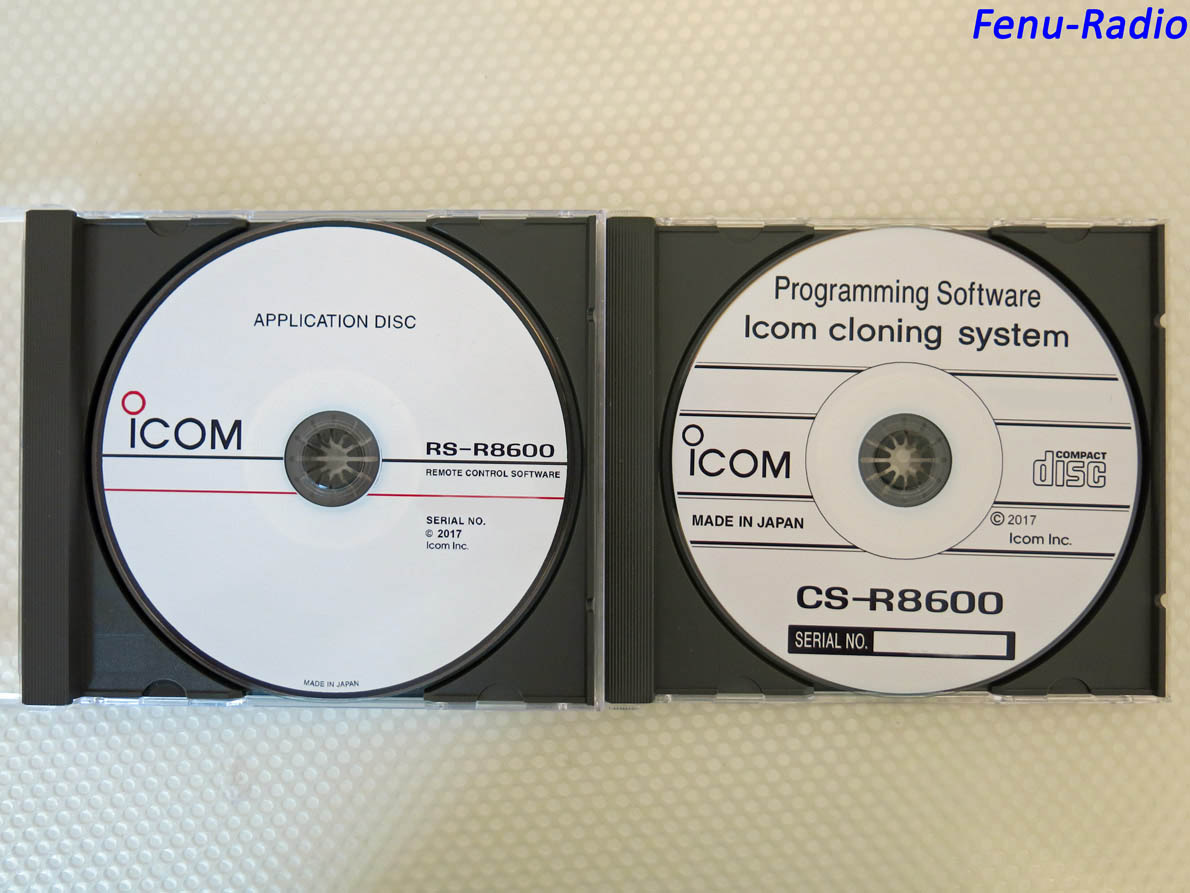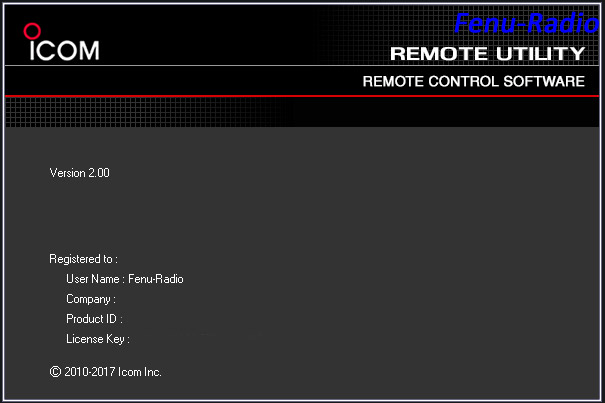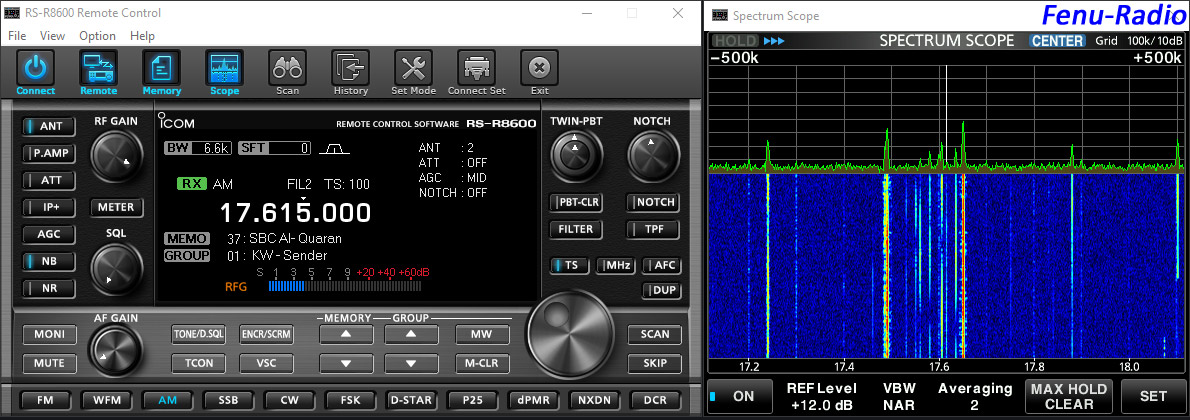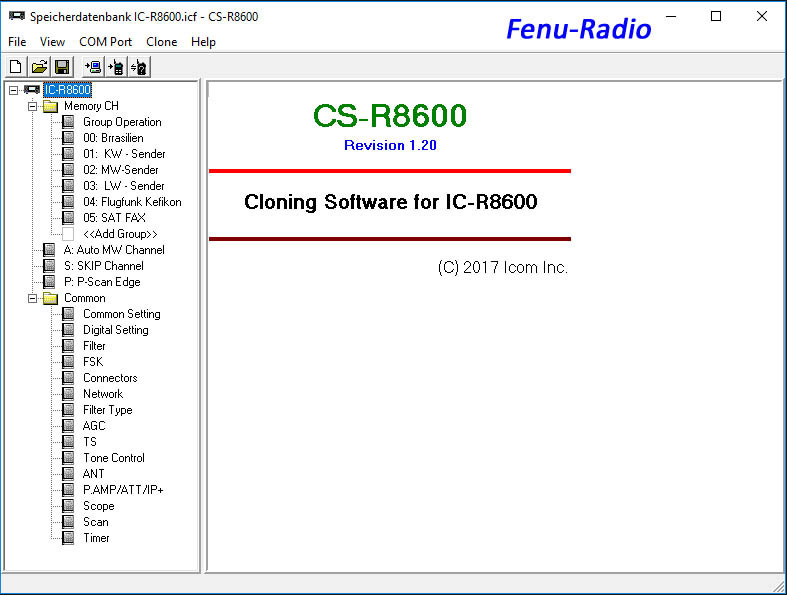|
In 2016, the ICOM Company as the first of the big and well-known manufacturers of ham radio products introduced the SDR-receiver Icom IC-R8600. That was a big and definitively positive surprise! Everybody had been under the impression that the IC-R75 and IC-R8500 would be the last receivers produced by Icom. Well, that was wrong as we found out pleasantly surprised. The news of the new IC-R8600 caused a real hype. Of course, everybody wanted to know when the radio would be on the market and how much it would be. There was lots of room for speculation as the internet forums showed. Time passed by and it was already the end of the year and no dealer could say when the R8600 would be launched in Europe. In early 2017 it said on the Japanese ICOM webpage -thank you Google for the translation!- that the IC-R8600 would be introduced in early April 2017 but not everywhere, only in Japan. On the web page of Icom Europe and Icom USA only advance information was available. In late March 2017, all of the sudden there were videos on YouTube where people showed their IC-R8600s. That meant that the first radios had been delivered. In the beginning of April it still was not clear when the radio would be available in Europe. Nobody knew anything for certain. It was obvious, of course, that the rumor mill started to turn. It was said that the IC-R8600 would be introduced at the Hamradio fair in Friedrichshafen in July 2017. Prices for the radio were mentioned that could not be believed because they were so outrageous. In order to put an end to the waiting I decided to import the IC-R8600 directly from Japan. On eBay, I came across the offer of a reputable Japanese dealer who advertised that he had three radios available. I was able to get hold of one of them and everything worked out fine. The IC-R8600 was on my table within five days. It was the Japanese version, of course, with some frequencies blocked. That did not bother me because I mainly use the radio for shortwave listening. An English manual was available on the internet and so I was one of first people in Europe who owned an IC-R8600.
When I unpacked the radio, I was surprised at how compact it was. Compared to its previous model IC-R8500, it was almost tiny. It is clear that SDR-technology requires less space than the old, analogue technology. But still, the IC-R8600 is solidly built and less heavy. As the previous models, the case is made of aluminum injection molding. The front is made of solid plastic as is the case with all newer Icom models and it has a clear display. Three rotary switches with pressure function, a handy tuning knob made from aluminum and a great display dominate the front display. Operating the radio can be learned very quickly. The menu structure resembles the one of the High-End Receiver IC-R9500 and most of the DSP functions have been copied from this receiver and because I once owned one of these, the change to the IC-R8600 was very easy. The touch display is the command center of the IC-R8600. Here you can practically access all functions and menus most of which are user-selectable. The water fall display and the spectrum are adjustable within wide ranges.
The block diagram shows the operating principle of the IC-R8600. Up to 30MHz, the IC-R8600 is a direct sampling receiver. A pre-selection with 11 band passes (BPF) is upstream which prevents the ADC from overloading. Above 30 MHz, the IC-R8600 is a double/triple Superhet, also with preselection upstream. Subsequently, the signal is digitized in the A/D converter and is then processed in the following steps.
Operating the IC-R8600 The IC-R8600 comes without a power supply. You can use the supplied DC-cable using a 13.8V power source or you may order the AD-55NS power supply. A standard DC barrel connector cannot be used. Fortunately, the AD-55NS does not cause any interferences and there were none on long-, medium-, and shortwave. The back has a lot of connectors, e.g.
Now let's get with it! Turn the radio on and the welcome screen comes up. Wonderful! You will immediately like the bright and colorful screen. The control knobs do not slip through your fingers and hardly wobble. There was something which I did not like: The aluminum main control knob with its non-slippery rubber ring is a little small. It turns very smoothly, but without flywheel effect, which springs into action when the knob is turned faster and faster. The size of this knob reminds you of the one that the AOR AR-5000 had with its mini-knob. The control knob of the IC-R8600 has a three-step brake whose controls are under the knob itself. This break has a lock function for channel operation, resistance and normal free wheel operation. The brake control is difficult to handle because it is very small. The touch display reacts very fast and sensitive. There will be some finger prints on it after touching it a few times. A display protective foil is highly recommended. They are available for the IC-7300 and also fit the display of the IC-R8600. IF you use them, there will be no finger prints and the display will be protected. The frame around the display is made of plastic which looks very good but is scratch-sensitive. It's best to use a stylus for PDAs. Thus fingerprints on the display and scratches on the plastic frame will be avoided. It can also be recommended for slightly bigger fingers.
The few buttons on the front of the IC-R8600 have a distinct pressure point which makes operation easier. The sound of the built-in speaker is good. It is built into a separate case with a resonance hole. For listening to music, the basses are a little on the high side which is not bad, though. The IC-R8600 has bass and treble control. The settings can be saved in the menu for each mode. The audio is clearly made for intelligibility. On the front, the IC-R8600 has a SD slot on which you can save audio recordings, settings, screen shots etc. It is also used for firmware updates. Below you will find a few screen shots of display possibilities, settings and functions of the IC-R8600. These screen shots were taken with the Capture-function of the IC-R8600. After its activation, you have to press the power switch temporarily to take a screen shot of the display. The pictures will be saved on the SDcard.
But how this accumulation of technical functions and features work in practice? Over a couple of weeks -almost daily- I tested the IC-R8600 and compared it to the JRC NRD-545 and the Winradio G33DDC Excalibur Pro.
In most cases, the IC-R8600 was on par with the reference receivers. In order to receive the Russian Alpha stations' signals, the pre-amplifier had to be switched on, which did no harm. The G33DDC the signals were still audible but with interferences. The NRD-545 could not receive anything. On long- and shortwave there were hardly any differences, except that the G33DDC was a little bit more sensitive. On shortwave, up to 30 MHz the differences only concerned the audio characteristics of each radio. None of the antennas caused any overloads. The dreaded clipping indicator "OVF" only lit up shortly when the +20dB pre-amplifier was used. There were no audible overloads. When interferences from a near-by fence occurred, the "OVF" lit up as well, which is normal, though. This fence is about 20 m away from the antennas. The G33DDC's clipping indicator lit up as well. The resolution of the display is not very high. In the case of very weak, but still audible signals, no station was visible at +/-2.5 kHz width, especially as far as CW and USB are concerned. Only when zooming in all the way on +/-2.5 kHz, the stations were faintly visible. With the G33DDC which its PC computing power at its disposal, this was not a problem. Above the shortwave range, the receiver could not be tested, despite all efforts, except for 6m, FM, aeronautical radio and the 2m band. Due to the lack of signals, digital modes could not be tested at all, although there is some D-Star repeater nearby. When the 6m band was briefly open, several European stations could be heard using the Super Discone D 130. The FM band was no problem. Unfortunately, there is only one band width of 200 kHz available for WFM. RDS and stereo are dearly missed. Signals from aeronautical stations are best looked for with the Search- and Scan function. There are some useful functions available. When using the 8.33 kHz increments, the aeronautical band is checked within seconds. The IC-R8600's sensitivity is very good. I was in luck checking the 2m band and could listen in on several contests in SSB.
Below the are some audio comparisons between the radios. You can listen to the receivers in the following order:
↓ As always, we start at the lowest frequencies that can be received. As the IC-R8600 is specified starting with 10 kHz, I tried to catch the Russian Alpha stations on 11.9 kHz and 12.6 kHz. The active dipole Datong AD 370 rendered the signals from Russia audible. The IC-R8600 produced noticeably better signals. Practically nothing could be heard on the NRD 545. The G33DDC's signals were audible, but not as clearly as the Icom's. ↓ On 153 kHz, Radio Satelor in Rumania can be heard. This frequency range is increasingly interfered with by all our electronic gadgets and helpers we cannot do without. Simultaneously, a synchronous detector, notch filter and noise blanker was used for all radios. The IC-R8600 is the clear winner. The audio is not influenced too much by the notch filter. ↓ Russian amateur radio operators on 3671 kHz in LSB. Due to the IC-R8600's effective audio control, the signals' noise can be reduced somewhat by lowering the pitch. ↓ Radio Progreso is received in the same quality by all three radios using SAM and 6.4 kHz band width. The NRD 545's AGC, which its fast attack time, is clearly noticeable. ↓ Radio Rebelde from Cuba in AMS and 6.4 kHz bandwidth. With the signal being so strong, all receivers sound the same. ↓ Shannon Volmet on 5505 kHz in USB with 2.4 kHz band width. Bad conditions! Intelligibility is nearly the same with all three receivers. ↓ Radio MiAmigo on 6085 kHz in AMS and 6.4 kHz band width. Here the R8600's audio is a bit more clear than the one of the other two radios. ↓ Ham Radio operators in the 40m band. All radios have a clear signal with their individual audio characteristics. ↓ WRMI TruNews in AM synchronous, upper side band. Interfered with by local noise. The R8600 has a clearer audio here as well. ↓ Rostov Volmet 11297 kHz USB Basically all three radio render an intelligible signal. It seems like the NRD-545 has less noise. ↓ Ham Radio in the 20m band. The Winradio G33DDC definitely has a stronger signal here than the other two receivers. ↓ Radio Free Asia on 15430 kHz. All three are about the same. The R 8600's pitch was reduced a little and sounds a bit more muffled. ↓ Radio Ergo on 17845 kHz. A difficult signal. The Winradio G33DDC has the most quiet AGC. ↓ Radio France on 21690KHz in Portuguese. All three receivers practically at eye level. ↓ The CB-band is more and more open during summer. Here a conversation between two Finnish CB radio operators in USB. ↓ At times, the 10m band is open, too. All three radios produce a clear signal with their individual characteristics. Conclusion The first SDR receiver made by ICOM is major coup. Right from the start, it is on par with other high-end receivers, in some situations it is even better. The IC-R8600 is very similar to its bigger brother, the IC-R9500. Most functions are fully convincing, except for the noise reduction feature (NR). At the time of testing and with the firmware version 1.02 it was not fully satisfactorily. At the settings g from 2 to 15, there were digital artifacts, which came mainly out of the speaker. In practically all situations, the IC-R8600 could make use of its numerous features, especially the excellent noise blanker. It could filter out many crackling noise caused by an electric fence nearby. The adjustable treble and bass control were a helpful tool. The much dreaded overloads did not occur. Only when the +20dB pre-amplifier was activated, the "OVF" indicator lit up without any audible effects Most of the frequency range could not be tested, which is also true as regards the interesting digital modes. There were no signals that could be detected. I could receive the 6m band, FM, aeronautical radio. and the 2m and here the IC-R8600 showed its sensitivity. I really missed a band width control for FM. in WFM, there is only one band width of 200 kHz available. For such a modern radio, there is no RDS or stereo available, either. Too bad! I don't even have to mention the fantastic display. It is really superb. Like its bigger brother, the ICOM IC-R8600 is really top notch!! Translated by Klaus Floer, DL3KF posted: 05.06.2017
Icom RS-R8600 Remote & CS-R8600 Cloning Software
Since the beginning of
2018, the RS-R8600 Remote Software and the CS-R8600 Cloning Software
are available in Europe. The RS-R8600 is for remotely controlling
the Icom IC-R8600 over a local area network or over the Internet.
But also via USB the IC-R8600 can be controlled with it.
RS-R8600 The
RS-R8600 is distributed exclusively as a CD version. A download
version does not exist. In addition to the control software, the "Remote
Utility", the connection program between the IC-R8600 and the
RS-R8600 is also included on the CD. In addition to the remote
utility, a virtual serial port and a virtual audio cable is also
installed. Afterwards the installation of the RS-R8600 will be done
automatically. Below are a few important configurations in the
Windows Firewall must be made so that the programs then work. These
important steps can be found in the user manual <Link> of the
RS-R8600.
Before remote program
start, the receiver must already be switched on. After
double-clicking on the RS-R8600 icon, the remote program will appear.
If you click on "Connect", the connection to the IC-R8600 is
established. If you want to open the spectrum, for example, click on
the corresponding button, etc.
CS-R8600 With the Cloning Software CS-R8600, the memory of the IC-R8600 can be edited in full. The device settings can almost all be done via the cloning software. The nice thing is that everything can be stored on the PC and everything can be dubbed on a device reset. A laborious reprogramming can be handled this way. The memory contents can also be exported as a "CSV" file and imported into the RS-R8600 program. Data transfer to the IC-R8600 is fast. After successful transfer, the IC-R8600 must be restarted. posted: 0.7.06.2018
|
.jpg)

.jpg)
.jpg)
.jpg)
.jpg)

.jpg)
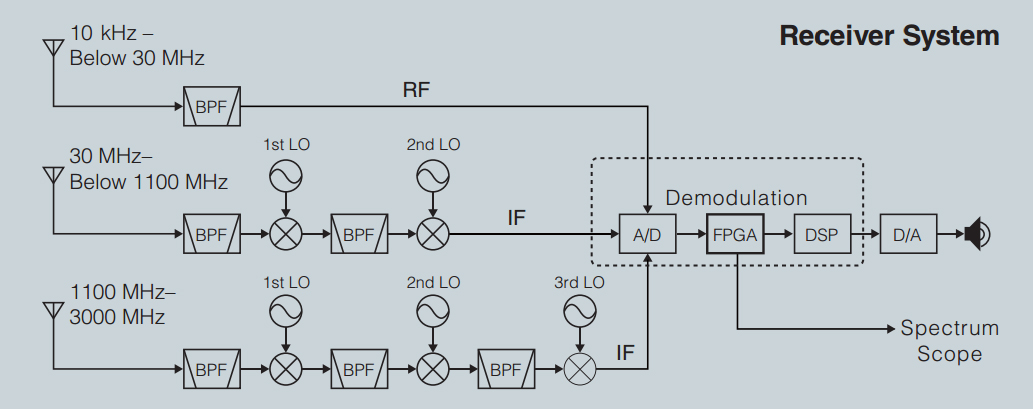
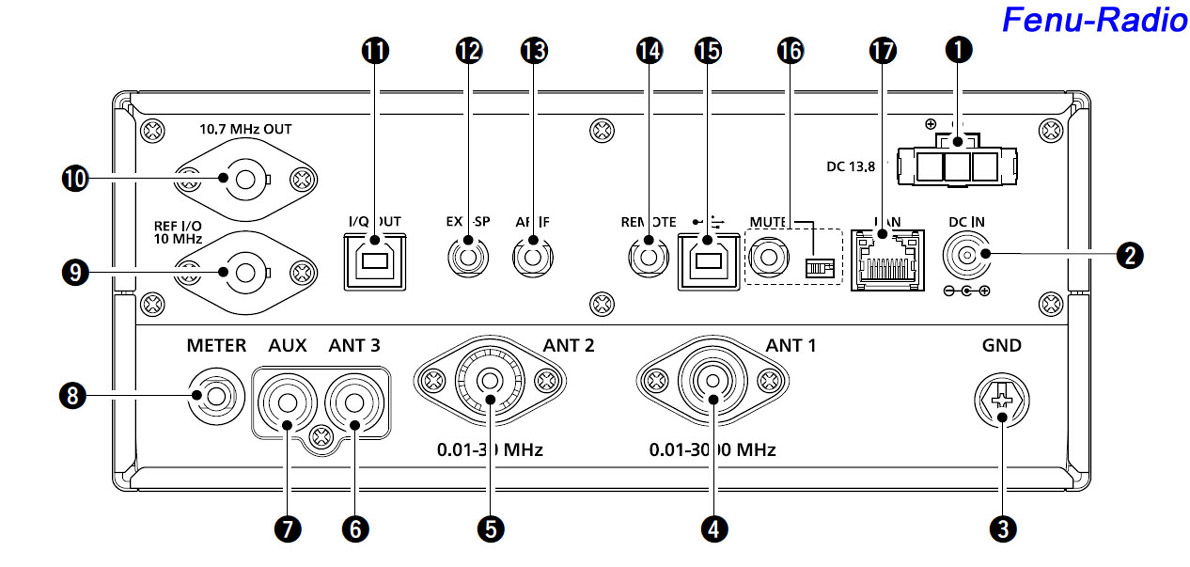
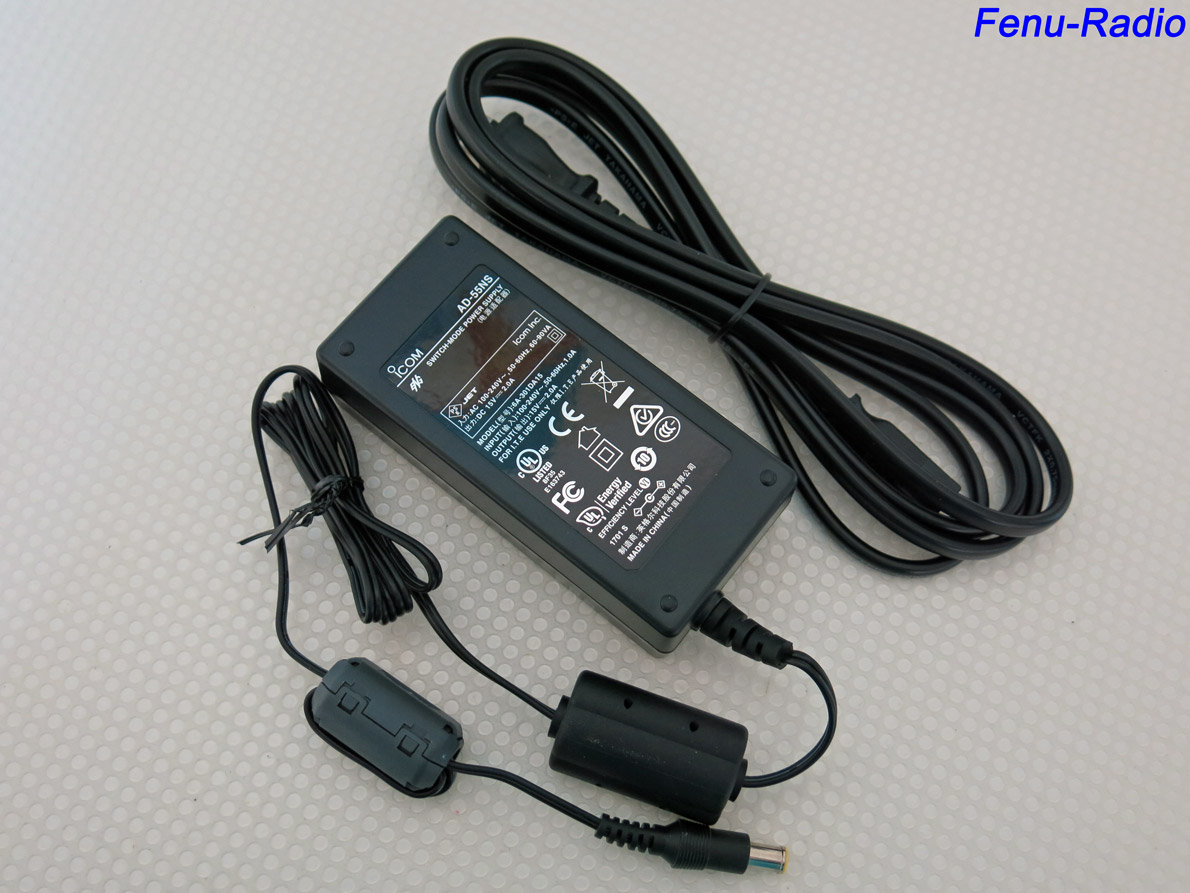
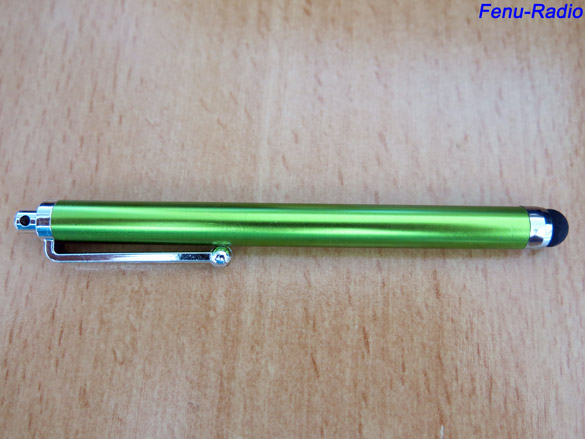
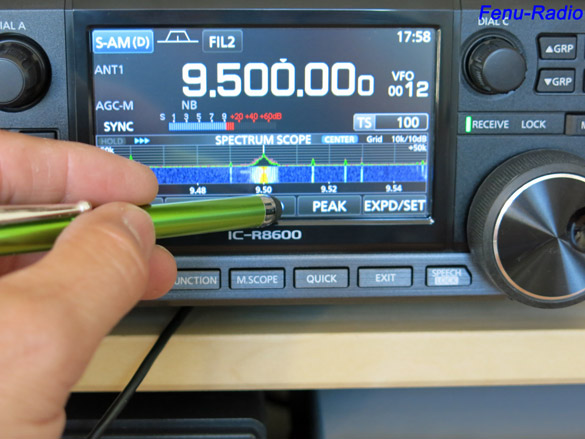
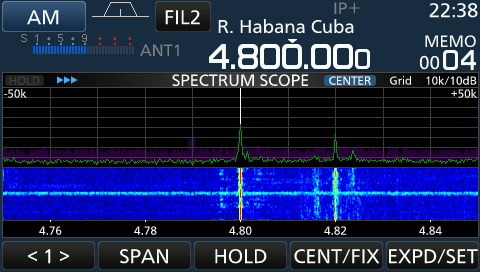 Late evening
in the 60m band.
Late evening
in the 60m band.
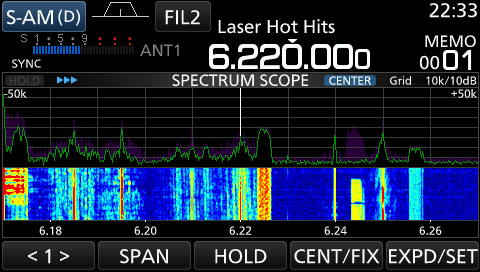 Popular
free radio station "Laser Hot Hits"
Popular
free radio station "Laser Hot Hits"
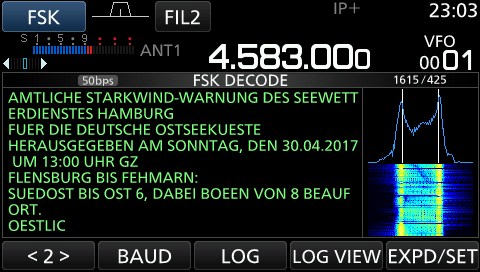 RTTY decoder
included! Decoding the sea weather service DWD.
RTTY decoder
included! Decoding the sea weather service DWD.
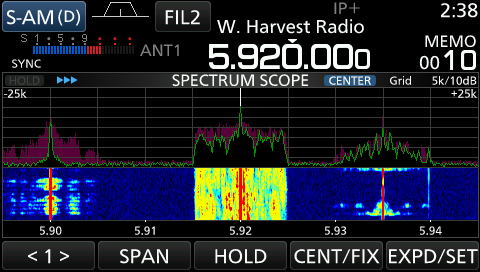 Beautiful
signal by Harvest Radio nice presented.
Beautiful
signal by Harvest Radio nice presented.
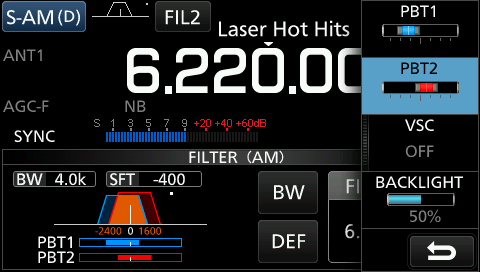 Laser Hot Hits
at 6220KHz. Open is the bandwidth menu & PBT menu.
Laser Hot Hits
at 6220KHz. Open is the bandwidth menu & PBT menu.
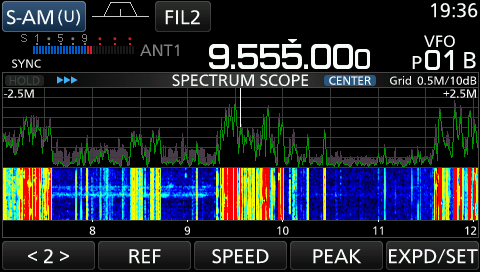 Visible
bandwidth: 5MHz! Almost 3 complete radio bands visible.
Visible
bandwidth: 5MHz! Almost 3 complete radio bands visible.
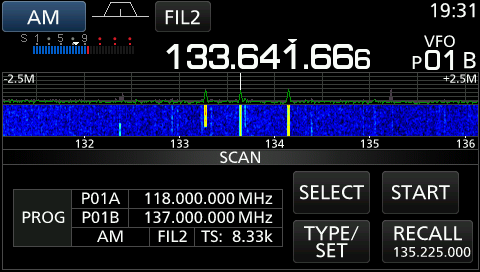 Civil Airradio
reception with open scan selection functions.
Civil Airradio
reception with open scan selection functions.
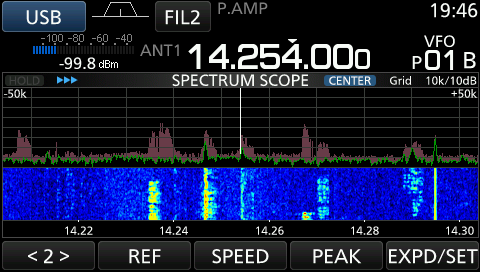 20m Hamradio Band. Viewing width 100KHz.
20m Hamradio Band. Viewing width 100KHz.
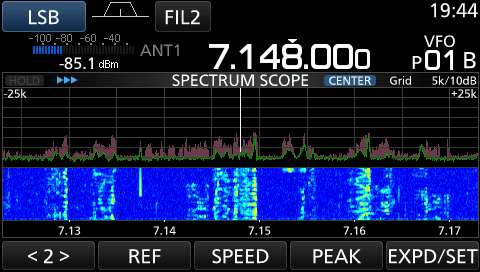 40m
Band
40m
Band
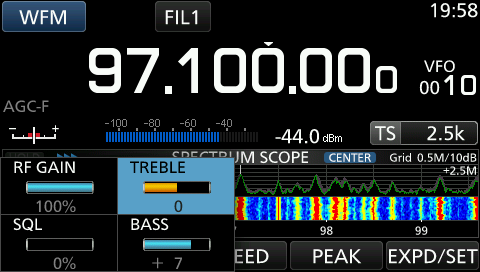 FM
reception on 97.1MHz (SWR3) with open level setting.
FM
reception on 97.1MHz (SWR3) with open level setting.
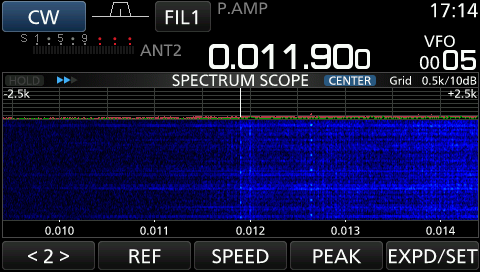 Russian
alpha signals on 11.9KHz & 12.65KHz
Russian
alpha signals on 11.9KHz & 12.65KHz
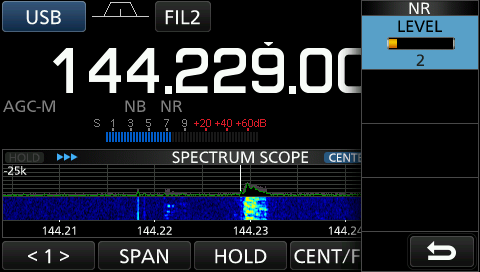 USB QSO on
2m with open noise reduction function
USB QSO on
2m with open noise reduction function
